History of the Cancan
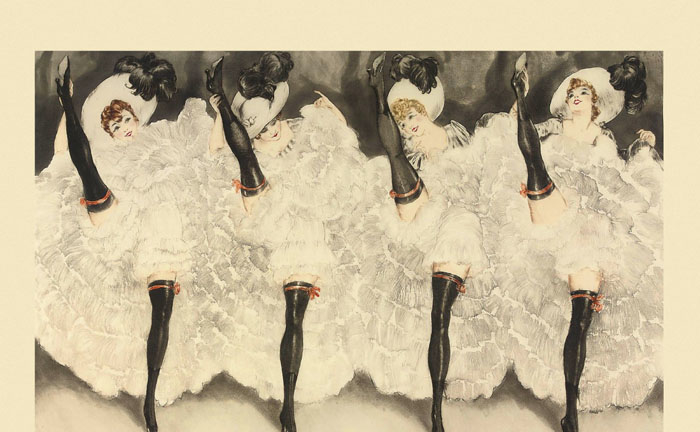
by Cybele A. Baker. Published in the September/October 2016 issue of Finery.
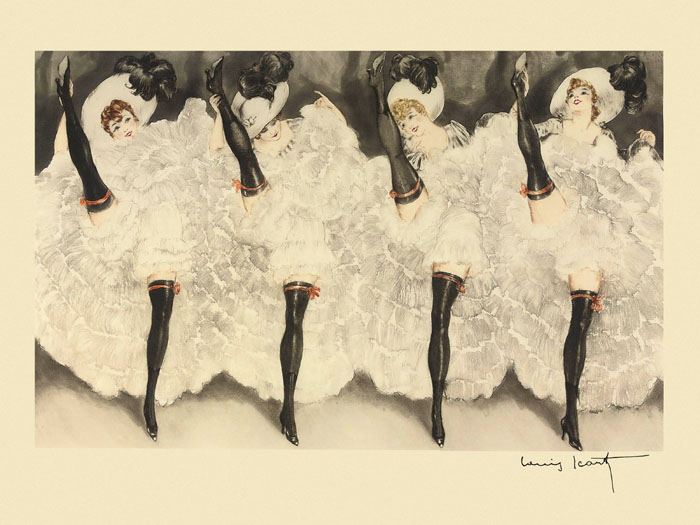
While it may be surprising, there is not much to be found about the exact origin of the Cancan. Where it started is, of course, in France, but who first choreographed and danced it is a bit of a mystery. It is supposed that the Cancan came from some of the final figures of the couples set dance, the quadrille, where there were exuberant arm gestures and some high kicks involved. However, who first created the raucous high kicks, jump splits, and derriere-flashing dance sets and named it the Cancan is not well documented.
The Cancan began appearing in the 1830s-40s in working class ballrooms in France. At first, it was mostly danced by men but women soon joined in, enjoying the freedom of movement and rebelliousness of kicking their skirt up high over their heads. There was an all-male dance troupe in the mid-19th century; the Quadrille des Clodoches performed in France and even went to London in 1870. Their act was a parody of the stately quadrille in which four men, two dressed as women, dance an outrageously exuberant version of the dance, very much like what is now considered the Cancan. But while they are considered an early form of Cancan, they were not THE Cancan and were not the first to do such dancing.
Eventually the dance was performed more by women than men and when the Moulin Rouge opened in 1889, the Cancan became one of their feature performances. It became so popular that other cabarets and dance houses started adding it to their shows. Their more popular dancers were actually able to make a good amount of money dancing the Cancan. Now when we hear the word Cancan, it is the Moulin Rouge we all think of as the place one should go to see this incredible dance performed.

It was mostly performed as a form of seduction by courtesans who worked at the Moulin Rouge. One of the most famous was Louisa Weber (b. 1866 d. 1929). She was nicknamed La Goulue (The Glutton) for her habit of downing drinks as she moved from table to table and was well known for her exuberance and love of the Cancan. One of her favorite moves was to flip her skirts over her head and flash her derriere to the men in the audience. She even had a heart embroidered onto her drawers to make it even more scandalous. In 1895, Ms. Weber decided to leave the Moulin Rouge to start her own troupe. Sadly, La Goulue’s business failed and she died penniless and unknown in 1929. She was buried in a Paris suburb until her remains were transferred to Montmartre and given exaggerated stature by calling her the creator of the French Cancan.
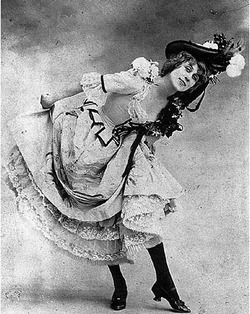
Jane Avril (b. 1868 d.1943) was another well-known dancer but with a slightly different style than La Goulue. She was less exuberant, more graceful, and much loved. Ms. Avril was hired to replace La Goulue after Ms. Weber left the Moulin Rouge to start her own troupe. Ms. Avril was one of the few Moulin Rouge dancers to travel outside of France and dance for other theaters, even traveling to London to dance in the 1890s. She danced well into her 40s. At about the age of 42, she married an artist who, after an initial happy period, proved to be irresponsible. He was gassed in WWI and, after his return, lost his job and began abandoning her days at a time. They were poor and, after his death, she lived her last 15-20 years in poverty.
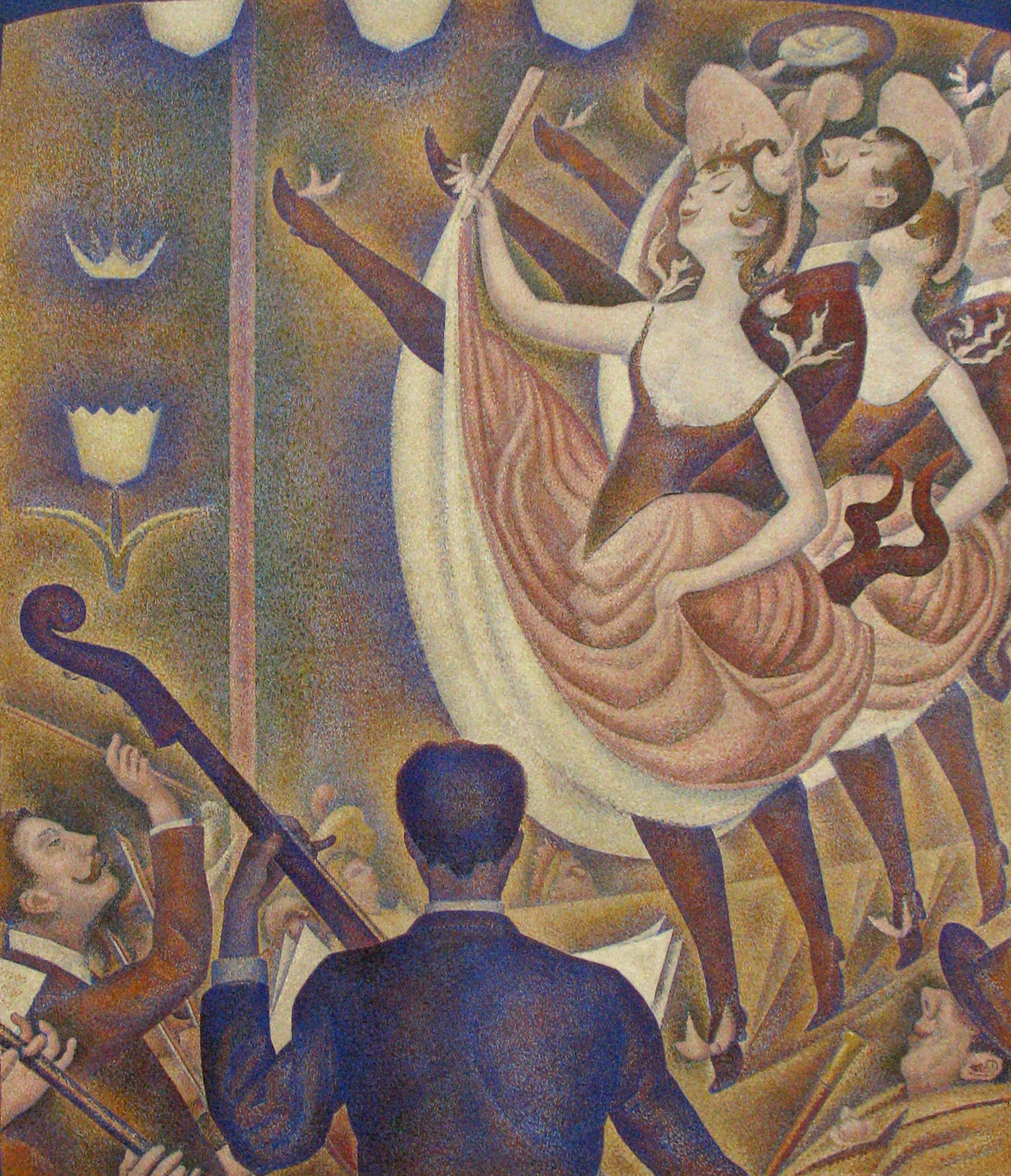
The Cancan was made more widely famous by the paintings of Henri Toulouse-Lautrec (b. 1864 d. 1901) who was commissioned by the owners of the Moulin Rouge to paint a series of posters featuring La Goulue, Jane Avril, and many other performers from the nightclub. There have been many other artists such as Georges Seurat, Lucien-Henri Weiluc, and even Pablo Picasso, who painted the Cancan or its dancers.
Many movies have depicted the Cancan. Some are historical fiction, like the films “Moulin Rouge” and “French Cancan”, and others musicals. “Moulin Rouge” (1952) is a fictional account of the life of Toulouse Lautrec directed by John Houston staring Jose Ferrer and Zsa Zsa Gabor. “French Cancan” (1954) is a French film which is a fictional account of how La Goulue became a dancer at the Moulin Rouge. Although this character is not named La Goulue or Louisa Weber, her history mirrors that of the famous dancer.
Other films are musicals, typically fictional stories such as Cole Porters’ “Can-Can!” and Baz Lurhman’s “Moulin Rouge”. “Can-Can!” was a stage musical and then a film starring Shirley Maclaine and Frank Sinatra, and is a completely fictional story about a dance hall owner, Maclaine, who is continually arrested with her dancers for performing the Cancan in her club. Historically, the Cancan was never illegal or banned. No dancers were recorded as being arrested for dancing the dance, no matter how scandalous French society may have thought it to be.
Baz Lurhman’s “Moulin Rouge” is the most recent film to use the Cancan as a theme in a musical format. Using the opera “La Boheme” as his plot inspiration, Luhrman created a story of “Truth, Love and Beauty” using modern songs and an all-star cast of Ewan MacGregor, Nicole Kidman and John Leguizamo. The Lurhman “Moulin Rouge”, while entirely fictional in its plot, actually took names and the some of the personas of the famous dance hall’s real performers. For example, “Satine” was based on Jane Avril, “Nini Legs-in-the-Air”, “Mme Fromage”, “Le Chocolat”, and “Le Petomaine” were all real performers during the first years of the dance hall and had various sized parts in Lurhman’s film. Even Jim Broadbent’s “Harold Zidler” was based on Charles Zidler, one of the original owners of the Moulin Rouge, The real Zidler died before the dance hall was even 10 years old and was not obsessed with turning it into a real theater as Lurhman’s “Zidler” was. However, it was an interesting idea of Lurhman’s to take aspects of the history for his extremely colorful 2001 film.
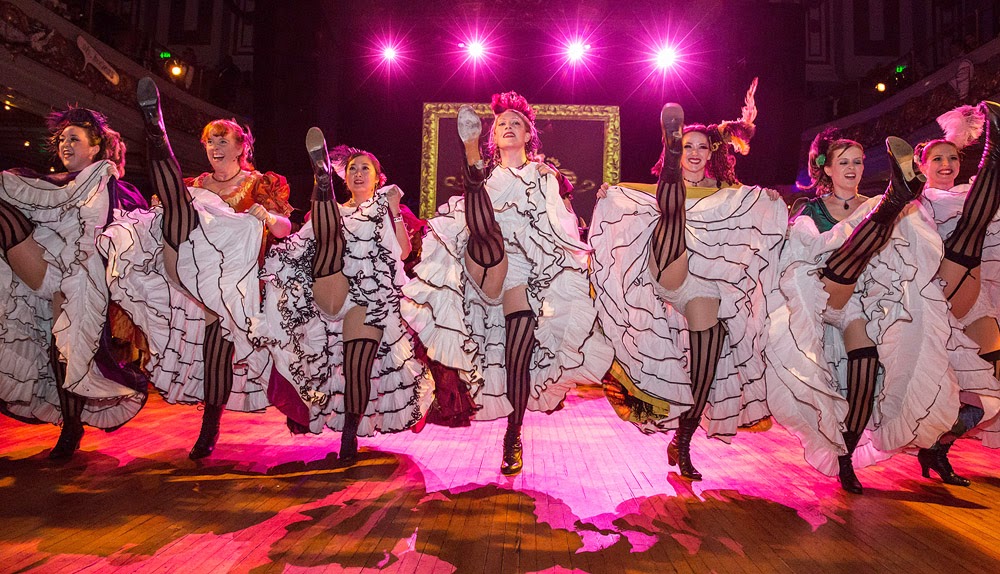
The Cancan today is still danced all over the world and, while the Moulin Rouge is still considered the place to see it performed, you can find troupes in England, Europe, and here in the US. The dance has been transformed from the final figures of a stately set-dance for couples, into a loud and acrobatic dance form. Currently taking the traditional high kicks, splits, cartwheels, and port d’armes (holding one leg straight up to your head and turning around backwards in a circle) and adding flips, handstands, assisted cartwheels, and other modern dance elements to create an even more high-energy dance that takes stamina and flexibility to perform.
“La vie est belle, voila le quadrille!” (Translation: “Life is beautiful, here comes the Cancan!”)

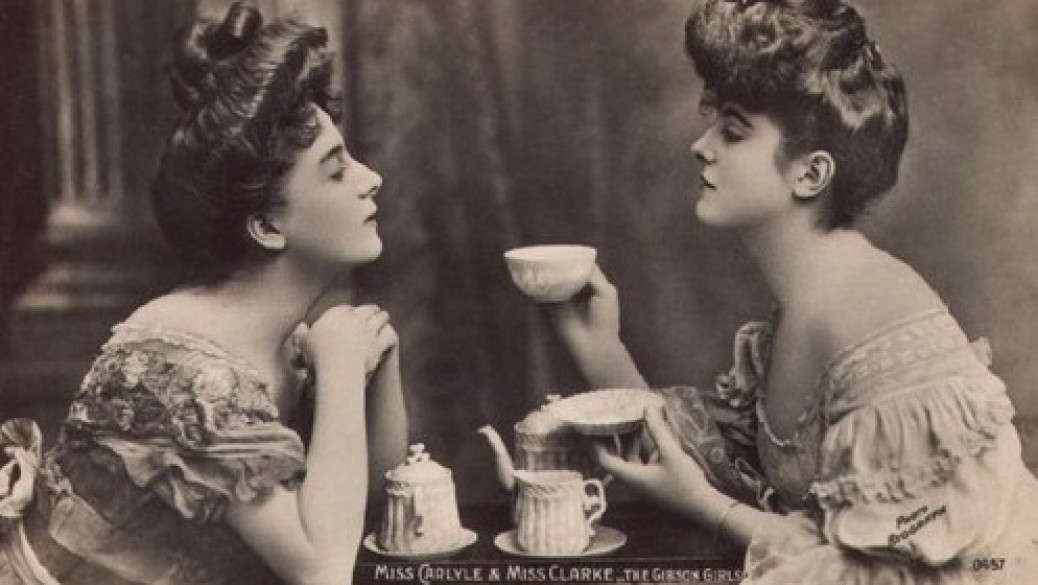
Rudy wilson
Always loved the colorful petticoats. When I heard that wonderful rustling sound mt whole body started to come alive with excitement.